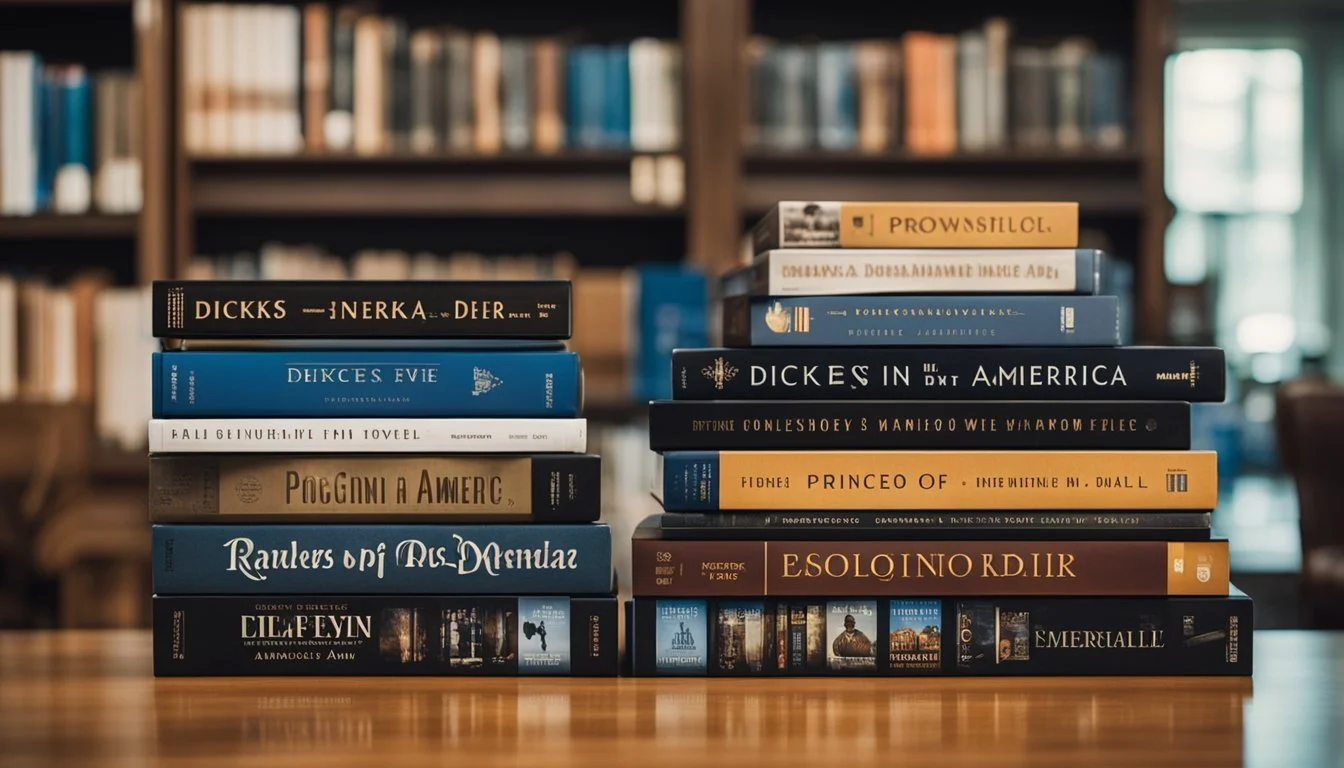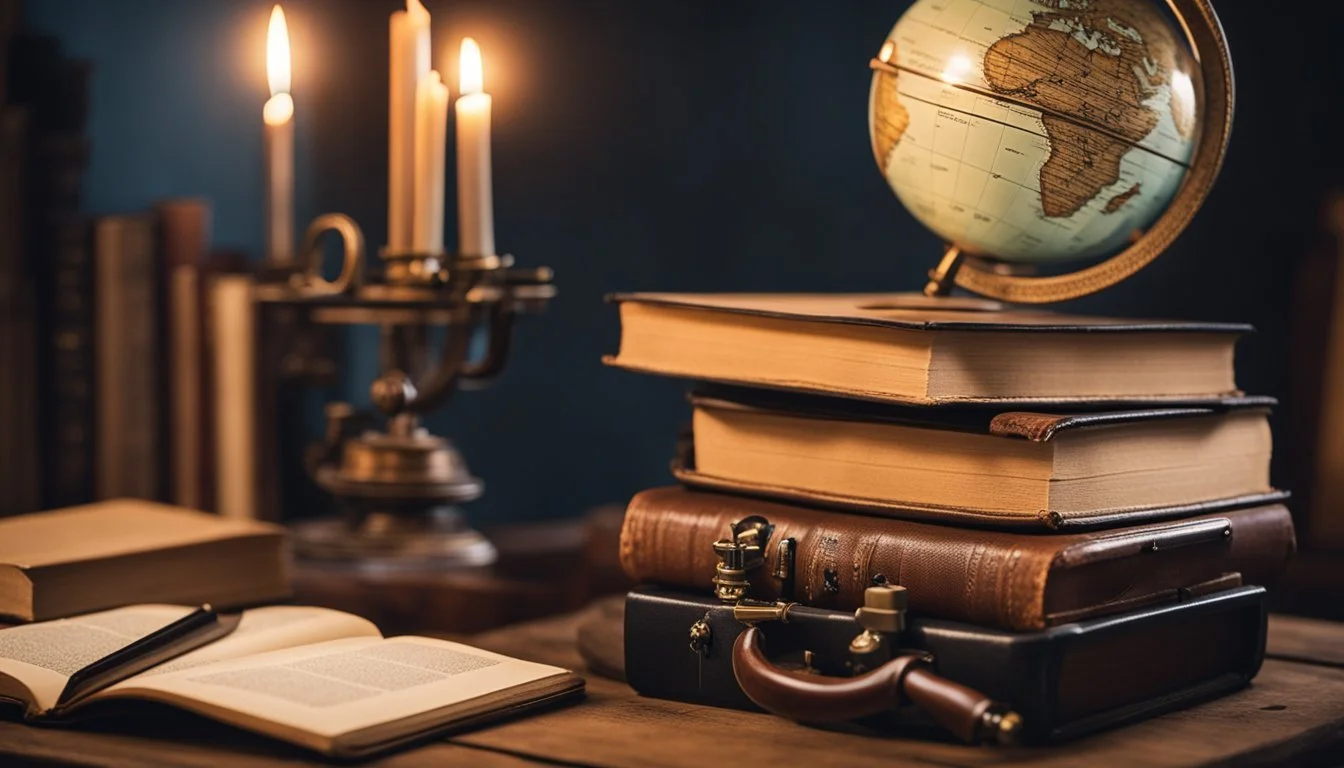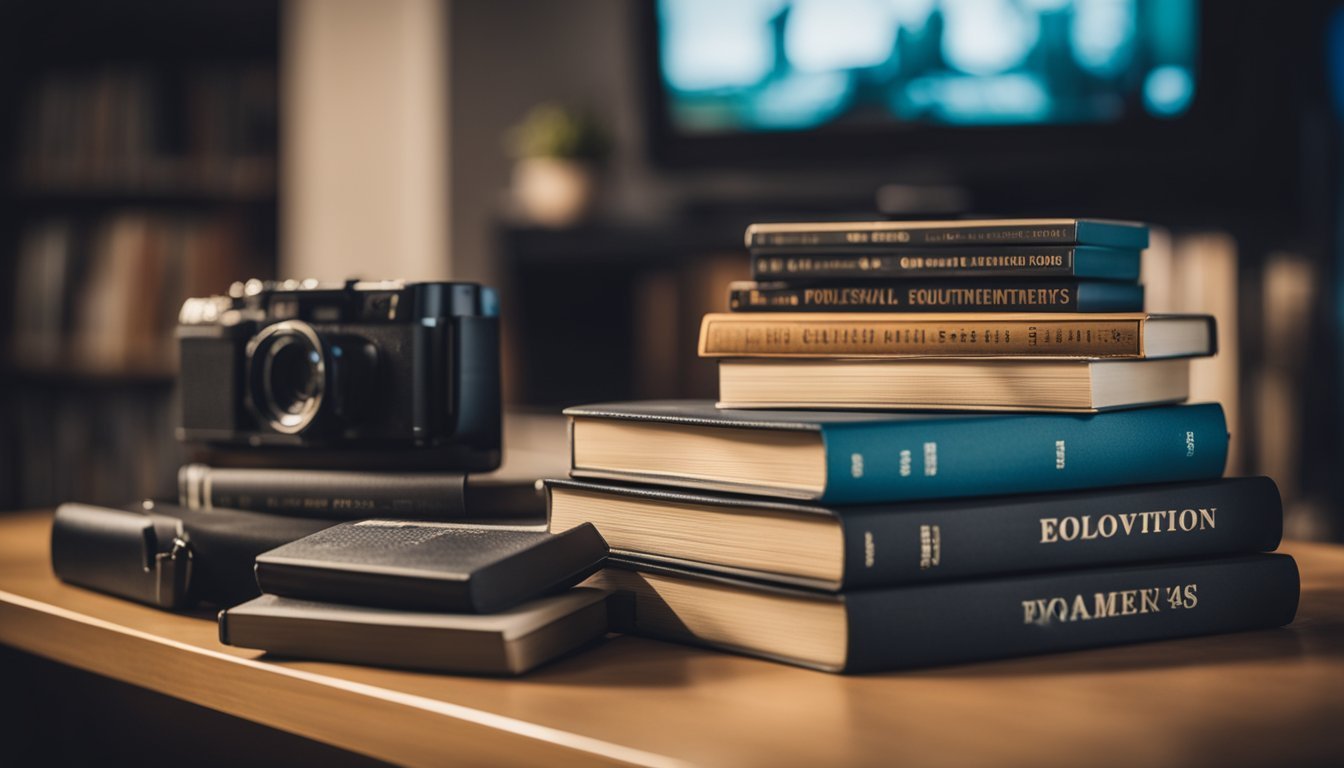10 Documentaries on the Evolution of the Novel
A Journey Through Literary History
Exploring the evolution of the novel offers a fascinating journey through the history of a literary form that has shaped cultures and societies worldwide. Documentaries provide an engaging and visual way to understand this transformation, from the early manuscripts to the digital age. These films not only highlight pivotal moments in literary history but also examine the impact of novels on readers and writers alike.
Understanding the progression of the novel through documentary film allows viewers to appreciate the intricate layers of storytelling and narrative techniques that have evolved over centuries. Whether delving into the lives of influential authors or the broader cultural implications of literary trends, these documentaries offer valuable insights and reflections on the ever-changing landscape of literature.
1) The Story of the Novel
This documentary explores the origins and development of the novel as a literary form. It delves into how novels began to emerge in the early 18th century in England, a period marked by significant social and political changes.
The film highlights key works and authors that shaped the novel's evolution. It discusses Daniel Defoe's "Robinson Crusoe" and its role in defining the modern novel. It also covers Horace Walpole's "The Castle of Otranto," often cited as the first Gothic novel.
Key literary figures such as Charles Dickens and Jane Austen are examined. Their works offered both social commentary and engaging storytelling, solidifying the novel's place in literature.
The documentary provides insights into both the sentimental and Gothic novel traditions. It traces how these genres influenced later literary movements.
Viewers will gain an understanding of how novels have mirrored societal changes, reflecting the evolving human experience. This makes "The Story of the Novel" an essential viewing for anyone interested in literary history.
More about "The Story of the Novel" (2020) on Wikipedia
2) In Search of Austen
Jane Austen's legacy is cemented through multiple adaptations and scholarly works analyzing her impact. This documentary segment traces her influence on literature.
1. The Real Jane Austen (2002) This film explores Austen's personal life and early influences. It features interviews with experts and visits to locations significant to Austen's life. More Information
2. Jane Austen: Life (2008) A detailed overview of Austen’s biography, examining how her life experiences shaped her writing. It uses a mix of narrative and expert commentary. More Information
3. Jane Austen: Behind Closed Doors (2017) This documentary delves into Austen's private sphere, using letters and diaries to piece together her life and thoughts. It provides a deep dive into her world. More Information
4. The Many Lovers of Jane Austen (2011) Hosted by Amanda Vickery, this film investigates Austen's romantic relationships and their portrayal in her work. It connects her personal experiences with her novels. More Information
5. Jane Austen: The Unseen Portrait? (2020) A fascinating exploration into the discovery and authentication of a potentially undiscovered portrait of Jane Austen. It brings art history into the literary conversation. More Information
3) Dickens in America (2005)
"Dickens in America" is a 2005 television documentary that follows the famed British author, Charles Dickens, during his travels across the United States in 1842.
The series is led by the distinguished British actress Miriam Margolyes, known for her affinity for Dickens's works. Margolyes retraces Dickens’s footsteps, beginning in London and spanning a 6,000-mile journey through America.
The documentary not only covers historical elements but also juxtaposes 19th-century American society with contemporary culture, offering insights into how the nation has changed over time.
Integrating travelogue and interviews, it provides viewers with a rich tapestry of Dickens's experiences and observations during his visit.
This series is an intriguing look into both literary history and American culture through the lens of one of England's most celebrated authors.
For more information, visit IMDB.
4) Oscar's First Book: Wilde's Literary Debut
Oscar Wilde's literary career began with the publication of his first book, "Poems," in 1881. This collection showcased his early poetic talent and laid the foundation for his future success as a writer. Wilde's poems often reflecting themes of beauty, love, and art, marked him as a significant voice in the late Victorian literary scene.
"Poems" was well-received and established Wilde's reputation as a poet. This achievement came before his more famous works in prose and drama, highlighting his versatility as a writer. Wilde's success with his debut book led to further opportunities, paving the way for his later achievements.
Wilde's style in "Poems" combines classical influences with a modern sensibility. His flair for language and wit is evident, traits that would become hallmarks of his later works. Though not as widely read today, this early collection remains an important part of his literary legacy.
For more information, visit Oscar Wilde's "Poems" on Wikipedia.
5) Woolf's Waves: A Documentary on Virginia (2022)
This documentary offers a deep dive into the life and works of Virginia Woolf, focusing on her groundbreaking novel, "The Waves." Released in 2022, it explores Woolf's innovative narrative techniques and the impact of her work on modern literature.
Woolf's use of soliloquies to narrate the inner lives of her characters is one of the central themes. The film captures how this technique revolutionized the way stories could be told.
Interviews with literary scholars and excerpts from Woolf's letters and diaries provide a comprehensive look at her creative process. They highlight her struggles and triumphs as a writer.
The documentary also examines Woolf's influence on contemporary writers. Her legacy is seen not just in literary circles but in broader cultural contexts.
For more information on the documentary, visit IMDb.
6) Austen's Enduring Popularity
Jane Austen, who passed away in 1817, penned six seminal novels that continue to captivate readers. Her sharp wit and keen social observations resonate across centuries. Titles like Pride and Prejudice and Sense and Sensibility have seen numerous adaptations, reinforcing her relevance in modern times.
Her work often delves into universal themes such as love, social class, and morality. These timeless subjects ensure her stories remain relatable and intriguing.
Adaptations like Clueless (1995), a modern retelling of Emma, highlight her influence on contemporary culture. Each adaptation introduces new generations to her enduring themes in creative ways. More about Clueless (1995)
By exploring the romantic and societal struggles of her characters, Austen has carved a unique place in literary history. Her books are not just read, but are part of an ongoing cultural conversation, demonstrating her lasting impact.
7) Brontë Sisters Unplugged
The Brontë sisters, Charlotte, Emily, and Anne, penned some of the most significant novelistic works in English literature. Documentaries focusing on their lives and environments provide valuable insights.
"In The Footsteps of The Brontë Sisters" (2022) follows the literary lineage through the British countryside. It reconstructs their creative journey through crucial locations. IMDB
"Women Ahead Of Their Time: The Brilliant Brontë Sisters" (2020) features Sheila Hancock exploring the sisters' lives. She seeks answers to their enduring impact on literature. IMDB
"The Brontë Sisters" documentary available on YouTube (2015) delves into their upbringing in Thornton and Haworth. This work emphasizes their literary and personal lives. YouTube
"The Brontës: New film Emily imagines the life of the most mysterious" (2021) presents a speculative yet engaging look at Emily's character, starring Emma Mackey. It explores an imagined origin for "Wuthering Heights." IMDB
Each documentary offers a distinct perspective on these iconic authors, enhancing our appreciation of their groundbreaking contributions to the novel.
8) Fitzgerald and The Great Gatsby
F. Scott Fitzgerald’s classic, "The Great Gatsby," captures the essence of the Roaring Twenties in America. Through the lens of Nick Carraway, Fitzgerald explores themes of wealth, class, and aspiration.
Several documentaries have delved into both the novel and Fitzgerald’s life. One such documentary is "THE GREAT GATSBY Documentary" on YouTube, detailing story elements and the author's inspiration. YouTube (2024).
"Gatsby in Connecticut" reveals how the summer Scott and Zelda Fitzgerald spent in Connecticut inspired some of the novel’s elements. This film provides a background on the personal experiences that shaped the classic. YouTube (2023).
"The Great Gatsby: Midnight in Manhattan" marks the 75th anniversary of the novel, offering insights into Fitzgerald's life and his creation of Gatsby’s world. IMDB (2021).
Essential non-fiction works also shed light on Fitzgerald and "The Great Gatsby," like Matthew J. Bruccoli’s biography "Some Sort of Epic Grandeur" and Mary Jo Tate’s "F. Scott Fitzgerald A to Z," which serves as a reference. These books are crucial for understanding the detailed context behind the novel.
Such films and books allow readers to deeply connect with Fitzgerald’s work, providing a comprehensive view of the times and inspirations behind one of America’s most beloved novels.
9) From Orwell to Huxley: Dystopian Novelists
The 20th century saw the rise of notable dystopian novelists who painted stark, cautionary tales about the future. George Orwell, through his iconic work "1984," introduced a world dominated by authoritarian control, where "Big Brother" is always watching. This novel left an indelible mark on our perception of government surveillance and propaganda. 1984 (1949)
Aldous Huxley, on the other hand, offered a different vision in "Brave New World." He depicted a society pacified by technological and pharmaceutical means, where individuality is suppressed for the sake of stability and happiness. Huxley's work critiqued consumerism and the loss of personal freedom in exchange for societal order. Brave New World (1932)
Yevgeny Zamyatin's "We" also contributed significantly to the genre. Often considered a precursor to Orwell and Huxley, Zamyatin's work envisaged a society driven by extreme collectivism and technological control, influencing both of his successors. We (1924)
These authors not only chronicled fictional futures but also reflected the anxieties of their times. Orwell's stark warnings against totalitarianism and Huxley's critique of technological pacification remain poignant and relevant today. Their works continue to inspire both readers and writers in the realm of dystopian literature.
10) The Rise of Magical Realism
Magical realism is a unique literary genre that blends the fantastical with the mundane, treating magical events as ordinary occurrences. This genre first gained significant attention through Latin American literature, with influential writers like Gabriel García Márquez and Jorge Luis Borges.
Magical realism's distinctive approach involves portraying supernatural elements with a matter-of-fact tone. By doing so, it diffuses the boundary between reality and fantasy, creating a world where magic is integrated into the everyday. This technique allows for a deeper exploration of complex social and political themes.
The genre's roots trace back to the early 20th century. The term "magical realism" was initially coined in 1925 by German art critic Franz Roh to describe a style of visual art. Over the decades, the concept evolved and was embraced by Latin American authors, leading to its global proliferation.
Modern adaptations continue to keep the essence of magical realism alive while introducing it to new audiences. Documentaries that chart the evolution of this genre showcase its impact and transformation through the years, providing insightful perspectives on its cultural significance.
One notable documentary, The Magic of Realism: A Journey Through Literature (2015), delves into the foundations and growth of magical realism within literary circles. It explores significant works and authors who have shaped the genre.
For more on The Magic of Realism: A Journey Through Literature (2015), visit IMDB.
The Beginnings of the Novel
The novel as a literary form began to take shape in the early 18th century, influenced by social changes and new literary styles. Key developments include the emergence of early influential works, the popularity of epistolary novels, and the rise of realist novels.
Early Works and Influences
The initial stirrings of the novel emerged in the early 18th century in England. Works like Daniel Defoe’s Robinson Crusoe and Samuel Richardson’s Pamela played a significant role. These novels reflected contemporary issues and individual experiences, moving away from the allegorical or poetic forms that had previously dominated literature.
The novel’s appeal grew rapidly, incorporating narratives centered on personal and social issues. Defoe’s Robinson Crusoe is notable for its realistic portrayal of a castaway’s life, establishing a precedent for future novels focusing on personal survival and adventure.
The Epistolary Novel
The epistolary novel, written in the form of letters or diary entries, gained popularity as a way to explore personal thoughts and emotions in an intimate format. Samuel Richardson’s Clarissa and Pamela are prime examples. These novels offered readers a sense of immediacy and connection with the characters, presenting their inner lives and struggles directly through their own words.
This form allowed writers to delve deep into psychological development, setting the stage for more complex character-driven narratives. It also provided a means to address social issues, particularly those affecting women, by presenting personal stories that resonated with readers.
Rise of the Realist Novel
By the mid-19th century, the realist novel began to gain prominence. Writers like Charles Dickens and George Eliot focused on depicting everyday life and society with detailed accuracy. Their novels addressed the social issues of their time, from poverty and class struggles to the ethical dilemmas of individuals within a rapidly changing society.
Dickens’ Oliver Twist and Eliot’s Middlemarch are quintessential examples of realist novels. They not only entertained but also provoked thought and discussion regarding social reform and human morality. Realism brought the portrayal of ordinary lives to the forefront, establishing the novel as a powerful tool for social critique and reflection.
The Victorian Era
The Victorian Era saw a dramatic evolution in the novel, characterized by contributions from key authors and significant impacts on society and culture. This period was influential in shaping modern literary conventions.
Key Authors and Their Contributions
Prominent authors like Charles Dickens, George Eliot, and Thomas Hardy were central to the Victorian novel's development. Dickens' vivid depictions of London life introduced iconic characters like Ebenezer Scrooge from "A Christmas Carol", illustrating societal issues.
George Eliot, with works like "Middlemarch", focused on the inner lives of characters, emphasizing psychological depth. Thomas Hardy, known for "Tess of the d'Urbervilles", explored the darker aspects of rural life and fate.
These authors, among others, helped establish realism as a vital narrative style, moving away from romanticism and allegory.
Impact on Society and Culture
Victorian novels often addressed pressing social issues, including poverty, class struggle, and industrialization. The depictions of these themes in literature brought widespread public awareness and empathy.
Novels from this era influenced public opinion and even inspired social reforms. For instance, Dickens' works highlighted the plight of the poor, contributing to changes in laws and social attitudes.
The popularity of serialized publications made novels accessible to a broader audience, facilitating a new wave of literacy and engagement with literature. This accessibility allowed the novel to become a central cultural artifact of the time.
Modern and Postmodern Novels
Modern and postmodern novels have significantly changed the landscape of literature, introducing groundbreaking narrative styles and integrating technology.
Innovations in Narrative Style
Modern novels often focus on realism, centering around everyday life and ordinary people. This shift brought a more authentic portrayal of the world and human experiences. Authors like James Joyce and Virginia Woolf exemplified this change by experimenting with stream-of-consciousness techniques.
Postmodern novels went further, breaking linear narratives and embracing fragmented storylines. Writers such as Thomas Pynchon and Don DeLillo emphasized narrative multiplicity, challenging traditional storytelling conventions. These works often include metafictional elements, blurring the line between fiction and reality.
The Role of Technology
Technology has played a pivotal role in evolving both modern and postmodern novels. The rise of digital platforms has allowed for innovative forms of storytelling, such as hypertext fiction. These works encourage non-linear reading experiences, enhancing reader interaction.
Additionally, technological advancements have influenced the themes of many postmodern novels. Cyberculture and the internet often feature prominently in narratives, reflecting contemporary concerns and reshaping the literary landscape. Authors like William Gibson have explored the intersection of technology and identity, crafting new futuristic realities.










